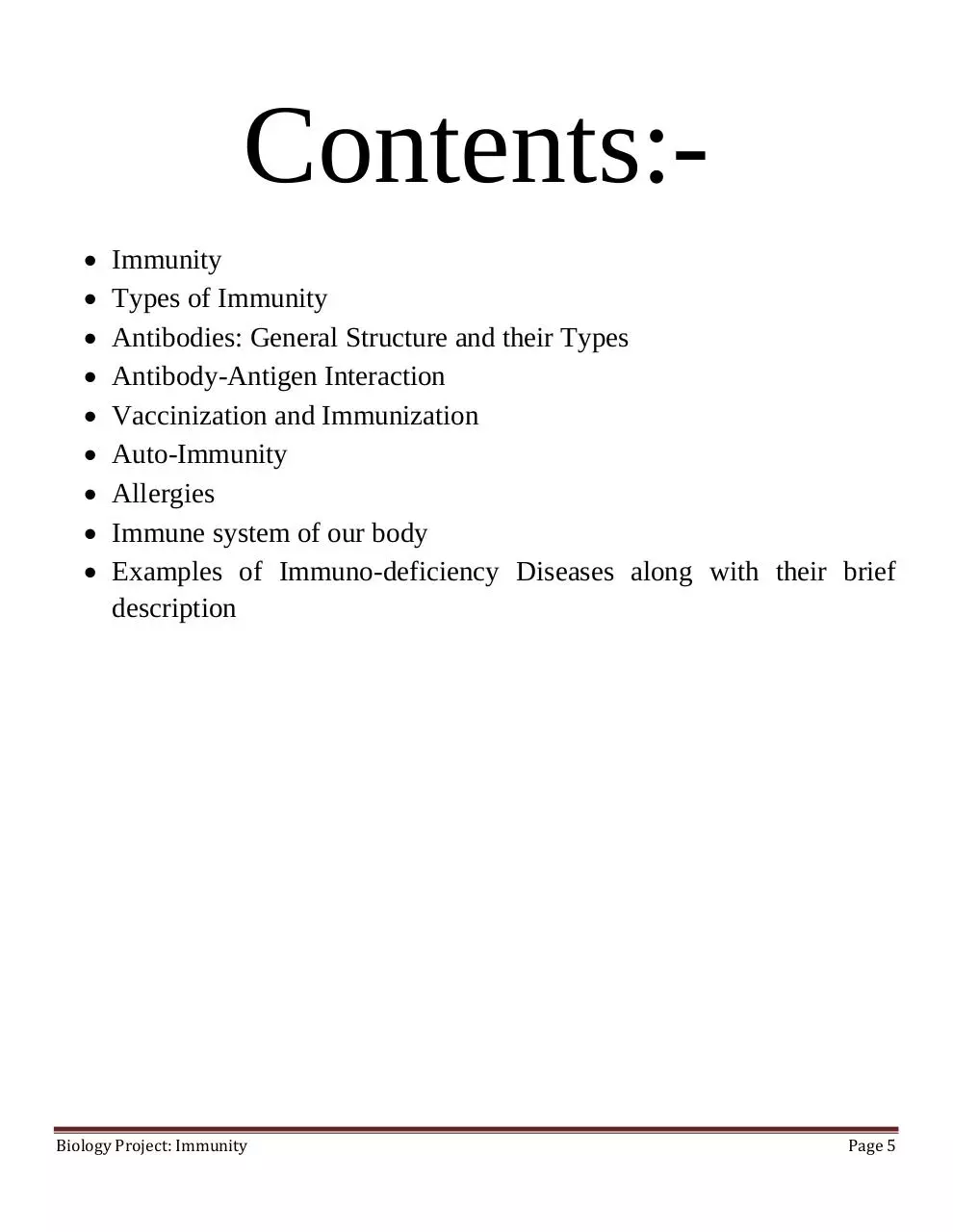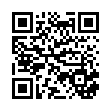Bio Project Immunity (PDF)
File information
Title: Immunity
Author: Acer
This PDF 1.5 document has been generated by Microsoft® Office Word 2007, and has been sent on pdf-archive.com on 12/01/2018 at 20:00, from IP address 117.229.x.x.
The current document download page has been viewed 30225 times.
File size: 1.14 MB (16 pages).
Privacy: public file





File preview
Biology Project
Name: Dabhi Mihir
Roll No: 3
th
Class: 12 (Science-PCB)
Topic: Immunity
Biology Project: Immunity
Page 1
–
Biology Project: Immunity
Page 2
:This is to certify that Mihir Dabhi, a student of Class
12th (Science-PCB) has successfully completed the
project on the above mentioned topic under the
guidance of Mrs. Nikitaba Gohil (Subject Teacher)
during the year 2017-2018 in partial fulfillment of
Biology Practical Examination conducted by CBSE,
New Delhi.
Signature of the Examiner
Biology Project: Immunity
Signature of subject teacher
Page 3
Objective: To study the basics of Immunity
and its types, along with Antigen-Antibody
structure and interaction and the basic
structure and working of Human Immune
System.
References:
NCERT Class 12 Biology Textbook
https://en.wikipedia.org/wiki/Immunity_(medical)
http://www.hammiverse.com/lectures/43/2.html
https://courses.lumenlearning.com/boundlessbiology/chapter/antibodies/
http://www.microbiologynotes.com/differences-betweenprimary-and-secondary-immune-response/
Biology Project: Immunity
Page 4
Contents:
Immunity
Types of Immunity
Antibodies: General Structure and their Types
Antibody-Antigen Interaction
Vaccinization and Immunization
Auto-Immunity
Allergies
Immune system of our body
Examples of Immuno-deficiency Diseases along with their brief
description
Biology Project: Immunity
Page 5
Immunity:Every day we are exposed to large number of infectious agents. However, only a few of these
exposures result in disease because our body is able to defend itself from most of these
foreign agents. This overall ability of the host to fight the disease-causing organisms, conferred
by the immune system is called immunity. Hence, it is also known as disease resistance.
o The lack of immunity is known as susceptibility.
Innate Immunity:It is non-specific, natural type of defense that is present at the time of birth. It is inherited by
the organism from the parents and protects it from birth. For ex. Humans have innate
immunity against distemper, a fatal disease of dogs. This is accomplished by providing 4 types
of barriers to the entry of the foreign agents into our body. These are —
(i) Physical barriers: Skin (its outer tough layer Stratum corneum) is the main barrier which
prevents entry of the micro-organisms. Mucus coating of the epithelium lining the respiratory,
gastrointestinal and urino-genital tracts also help in trapping microbes entering our body.
(ii) Physiological barriers: Acid in the stomach, saliva in the mouth, tears from eyes–all
prevent microbial growth.
(iii) Cellular barriers: Certain types of leukocytes (WBC) of our body like polymorpho-nuclear
leukocytes (PMNL-neutrophils) and monocytes and natural killer (type of lymphocytes) in the
blood as well as macrophages in tissues can phagocytose and destroy microbes.
(iv) Cytokine barriers: Virus-infected cells secrete proteins called interferons which protect
non-infected cells from further viral infection.
Biology Project: Immunity
Page 6
Acquired Immunity:It is pathogen specific. It is also known as adaptive or specific immunity. It is characterized by
memory. When our body encounters a pathogen for the first time, it produces a response
called primary response which is of low intensity. Subsequent encounter with the same
pathogen brings forth a highly intensified secondary or anamnestic response. This is credited
to the fact that our body appears to have memory of the first encounter.
It is of two types: Antibody Mediated and Cell Mediated.
1) Antibody Mediated: The primary and secondary immune responses are carried out with the
help of two special types of lymphocytes present in our blood, i.e., B-lymphocytes and Tlymphocytes. The B-lymphocytes produce an army of proteins in response to pathogens into
our blood to fight with them. These proteins are called antibodies. The T-cells themselves do
not secrete antibodies but help B cells produce them. Because antibodies are found in the
blood, the response is also called as humoral immune response.
Biology Project: Immunity
Page 7
Structure of Antibody:-
Antibodies are immunoglobulins (Ig) which are produced in the body in response to the
antigen or foreign bodies. Thus, all antibodies are immunoglobulins but all immunoglobulins
are not antibodies.
IgG serves as a model of basic structural unit of all Ig. Each antibody molecule has four peptide
chains, two small called light chains and two longer called heavy chains. Hence, an antibody is
represented as H2L2. The heavy chain has large no. of amino acids while the light chain has
smaller no. of amino acids. A disulfide bond joins a light chain with a heavy chain. Two
disulfide bonds also link the two heavy chains. This part of the antibody displays considerable
flexibility and is called the hinge region. The stem of the Y shaped antibody monomer is called
the FC region, so named because when antibody structure was first being identified, it was a
fragment (F) that crystallized (C) in cold storage. It lacks the ability to bind to antigen. Two
identical fragments of Y shaped molecule possess the antigen-binding sites and are thus
named fragment antigen binding (Fab). The antigen binding sites bind to the specific antigens
in a lock and key pattern forming an antigen antibody complex.
Each Y-shaped antibody molecule has atleast two binding sites that can attach to a specific
epitope (antigenic determinants of cell wall) on an antigen. Antigens thus combine with the
antibodies. The combination is very much like the lock and key analogy.
Biology Project: Immunity
Page 8
Different types of antibodies like IgA, IgM, IgE, IgG are produced in our body.
Biology Project: Immunity
Page 9
Download Bio Project Immunity
Bio Project Immunity.pdf (PDF, 1.14 MB)
Download PDF
Share this file on social networks
Link to this page
Permanent link
Use the permanent link to the download page to share your document on Facebook, Twitter, LinkedIn, or directly with a contact by e-Mail, Messenger, Whatsapp, Line..
Short link
Use the short link to share your document on Twitter or by text message (SMS)
HTML Code
Copy the following HTML code to share your document on a Website or Blog
QR Code to this page

This file has been shared publicly by a user of PDF Archive.
Document ID: 0000720346.